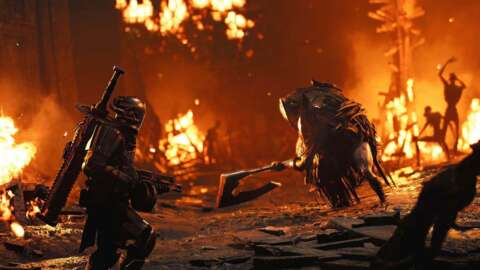Remnant 2 is the kind of sequel that improves upon its predecessor in almost every facet. The third-person gunplay has been tightened up and refined, there’s more color and variety to its diverse locales, and the various RPG elements and character progression have been greatly expanded upon, giving you more options to construct a unique build along with the incentive to delve into the game’s near-limitless replayability. “Dark Souls with guns” was used as shorthand to describe Remnant: From the Ashes, and although that label wasn’t wrong, it also wasn’t representative of the full picture. The first game stood out amongst a bevy of other Souls-likes because of the ways it deviated from the formula, and Remnant 2 continues to build on those foundations with a more dynamic and robust action-adventure that only falters in a couple of areas.
The first game wasn’t without its flaws, either, an underbaked story chief among them. Unfortunately, Remnant 2 doesn’t fare much better in this regard, offering another forgettable tale that lacks personality and engaging stakes, almost to the point where it feels like a copy and paste of the original game. Even the setup is essentially the same, beginning on the dilapidated streets of a post-apocalyptic Earth that’s been ravaged by an interdimensional being known as The Root. You eventually arrive at a small settlement called Ward 13–the same hub area as the first game, albeit in a slightly different spot–and despite being an injured newcomer, your custom character is immediately entrusted with a crucial task that quickly leads to a mission that decides the fate of all realms.
Contrivances aside, it’s difficult to care about the overarching story when the world as you know it consists of roughly a dozen people who might as well be cardboard cutouts. Characters such as McCabe and Rigs return, but they’re one-note vendors like before, while the friend you arrived with and risked your life to save performs the same static role. There are more interesting characters found in the various realms you’ll visit throughout the game; however, the game’s procedurally generated structure ensures that it takes a few playthroughs to form a clear picture of the lore and composition of each world, and by that point you’ll have probably forgotten everything you learned previously, such as the abundance of abstract concepts verbally thrown your way. The ending’s emotional payoff lands flat as a result.
